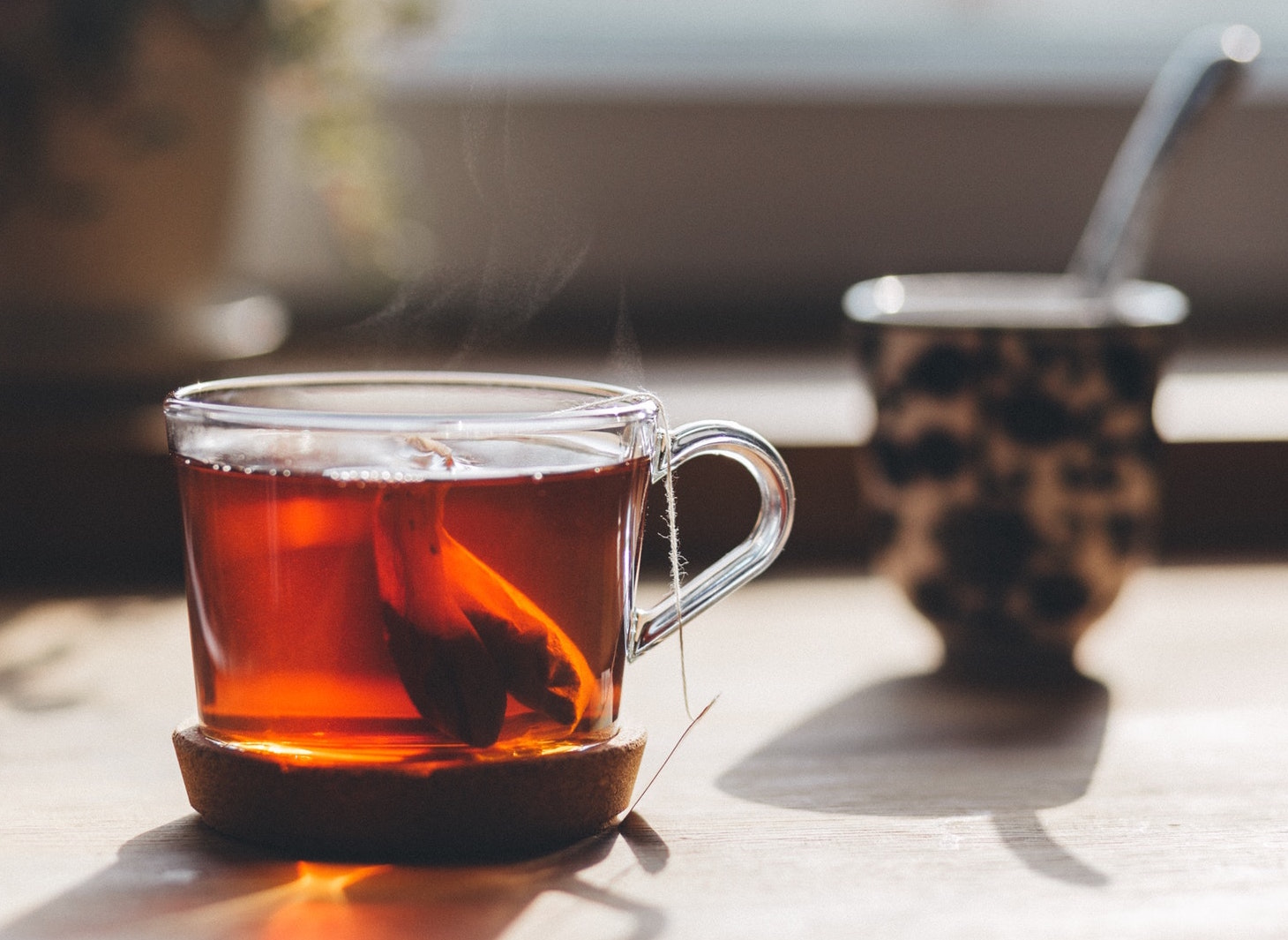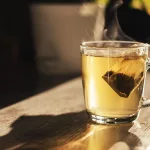A steaming mug of tea is ideal for warming up on chilly days, catching up with friends, or calming yourself during stressful times.
With its many health perks and cultural importance, it’s unsurprising that tea is the world’s second-most consumed beverage after water. Over 2 billion people drink tea daily (1, 2).
That said, consuming tea that’s excessively hot carries some hazards, including a higher chance of certain cancers and the possibility of scalding injuries.
This piece covers what you should know about the advantages and drawbacks of drinking hot tea.

Varieties of hot tea
The tea section at the supermarket can feel intimidating with its wide selection, from green tea to Earl Grey.
Different teas vary in many ways.
True teas
“True” teas are made from the leaves of the Camellia sinensis shrub, originally from China and East Asia (1).
Numerous factors create diversity among true teas: plant subspecies, leaf size, harvest timing, processing methods, blends, and added aromas or flavors (3).
There are six principal categories of true teas, defined by how the leaves are processed (1, 2, 3, 4, 5):
- White. Harvested as young silvery buds and quickly dried.
- Green. Fresh leaves picked and heated to stop oxidation.
- Yellow. Leaves are allowed to wither and yellow before drying.
- Oolong. Leaves are sun-wilted, bruised, and partially oxidized.
- Black. Leaves are wilted, smashed, and fully oxidized.
- Post-fermented. Green tea that has been fermented and aged, such as pu-erh.
Tea can be enjoyed plain with hot water or with milk, cream, honey, sugar, lemon, herbs, or spices. It’s also available as iced tea or instant tea.
Herbal teas
Teas that don’t come from Camellia sinensis are commonly called herbal teas or tisanes (6).
These are infusions made from herbs, spices, fruits, and other plant parts like leaves, flowers, buds, roots, and bark (6).
Across many traditions, herbal teas have been used medicinally. They are associated with various health claims; some are backed by scientific study while others lack robust evidence (6).
Popular herbal options include peppermint, chamomile, fennel, sage, raspberry leaf, lemon, rosehip, nettle, cinnamon, rooibos, ginger, rose, and lavender. For more on calming blends, see tea for anxiety.
Summary: True teas — such as green, yellow, white, oolong, black, and post-fermented varieties — are made from Camellia sinensis leaves. Herbal teas are derived from other plants like herbs, spices, flowers, fruits, leaves, roots, and bark.
Advantages of drinking hot tea
Tea is rich in protective compounds
Tea contributes negligible calories or macronutrients.
Yet it is packed with antioxidants and beneficial plant compounds, mainly polyphenols like catechins (1, 7, 8).
Unsweetened green and black teas are the most researched for health effects. They may (7):
- Lower some cancer risks. Black tea consumption is linked to a 21% lower risk of dying from cancer overall, and 1 cup daily of green tea is associated with an 11% reduced risk of endometrial cancer (9, 10).
- Reduce heart disease risk. Two cups a day may lower the chance of developing heart disease, and 3 cups of green tea daily might cut cardiac death risk by 26% (11, 12, 13).
- Lower blood pressure. Regular tea intake may slightly reduce blood pressure (14, 15).
- Reduce type 2 diabetes risk. Drinking 4 cups daily has been associated with a 10% lower risk of type 2 diabetes (16).
- Help prevent obesity. Tea is correlated with lower body fat; black tea polyphenols may help prevent weight gain, and green tea can increase metabolism (17, 18, 19, 20).
- Support brain health. Tea consumption may lower the risk of depression and neurodegenerative diseases like Alzheimer’s (21, 22, 23).
Various herbal teas are also associated with benefits such as:
- better sleep
- easing menstrual cramps
- alleviating menopause symptoms
- reduced anxiety
- stress relief
Although evidence is encouraging, many studies are small, and more research is required to confirm that hot tea consumption produces these health benefits.
Hot tea might protect against glaucoma
Glaucoma constitutes a set of eye disorders and is a leading cause of irreversible blindness worldwide (24).
Population studies have linked hot tea drinking to lower glaucoma rates (25, 26).
In one survey of 1,678 people, those who drank at least one cup of hot tea daily were 74% less likely to have glaucoma than non-tea drinkers (25).
Another study reported that two cups daily were associated with an 18% reduced glaucoma risk (26).
Notably, decaffeinated hot tea or iced tea did not show the same benefit. The protective effect likely arises from flavonoids common in true teas, which are present at lower levels in decaffeinated and iced varieties (24, 25, 27).
While the findings are promising, further research is necessary to confirm whether and how hot tea reduces glaucoma risk.
It may boost mood
Many people feel that a warm cup of tea brings relaxation and clearer thinking (28).
Regular tea drinkers have been linked to a 30% lower risk of depression (29).
Components of true tea—caffeine, teasaponin, L-theanine, and polyphenols—may affect the brain by lowering inflammation, influencing neural circuits, and modulating mood-related hormones like dopamine (29, 30, 31, 32).
The ritual of making and drinking tea may itself lift mood (28, 29, 33).
Some mood benefits probably come from taking a break to prepare a cup and the pleasure of anticipating it. Sensory enjoyment and cultural practices surrounding tea also contribute (28, 29, 33).
Small daily enjoyable acts like making tea may accumulate and help prevent depression over time (29).
Nonetheless, additional research is required to clarify exactly how hot tea influences mood (28, 29).
It can help keep you warm
Researchers propose that temperature sensors in the abdomen may respond when you drink a hot beverage, affecting your body’s perception of cold (34).
One study found that drinking hot water at 126°F (52°C) reduced shivering for about 10 minutes, which could be useful when working or exercising in cold environments (35).
Summary: Warm beverages like tea may reduce shivering in cold conditions. Plant compounds in tea might ease depressive symptoms, improve mood, support eye health, and help prevent several diseases.
Risks of drinking very hot tea
Very hot tea raises esophageal cancer risk
Substantial evidence connects drinking excessively hot tea with higher rates of esophageal cancer, particularly among smokers and heavy drinkers (36, 37, 38, 39).
Temperatures above roughly 140–149°F (60–65°C) may damage the esophageal lining, making cells more susceptible to carcinogens (36, 40, 41).
Both black and green tea appear to increase cancer risk when consumed too hot, though green tea consumed under 149°F (65°C) seems to offer protective benefits (40).
While the precise safe temperature isn’t fully established, it’s wise to allow hot tea to cool below 140°F (60°C) before drinking.
Hot tea can scald
Tea is typically made with very hot or boiling water and may be around 191–196°F (88–91°C) when served (42).
If spilled, it can cause severe burns.
Young children and older adults are especially vulnerable because of thinner skin and smaller body size. Hot water is a leading cause of burns in children aged 6–24 months and adults over 65 (42, 43, 44, 45).
Be cautious when making tea and consider letting it cool before serving.
One study’s authors recommend serving tea at 130–160°F (54–71°C) to stay pleasant to drink; however, keeping your drinking temperature below 140°F (60°C) is advisable (42).
Tea contains caffeine
Caffeine is a natural stimulant found in tea, coffee, cocoa, yerba mate, and other plants (46, 47, 48).
It can have beneficial or adverse effects depending on the person, source, and amount consumed (46).
Certain groups may want to limit caffeine, including those sensitive to it, people with liver or heart disease, pregnant or breastfeeding individuals, teenagers, and children (46, 47, 48).
Adults are generally advised to keep caffeine below 400 mg per day (46).
Exceeding this can cause restlessness, nervousness, gastrointestinal upset, tremors, irritability, and heart rhythm changes (46).
Caffeine content varies by tea type. For instance, an 8-fluid-ounce (237 mL) cup of brewed green tea contains about 29.4 mg of caffeine, while black tea contains about 47.4 mg, though actual amounts depend on blend and steeping time (49, 50).
If you wish to avoid caffeine, choose decaffeinated teas or naturally caffeine-free herbal options like peppermint, chamomile, or ginger. You can also explore linden tea as a soothing herbal choice.
Summary: Drinking very hot tea raises the chance of burns and esophageal cancer. Allow tea to cool below 140°F (60°C) before drinking. Also, true teas contain caffeine, which can be harmful in large amounts or for certain people.
How to brew hot tea safely
To make hot tea, choose a true tea or an herbal infusion you enjoy. Common selections include English breakfast, Earl Grey, Darjeeling, sencha, peppermint, and chamomile.
Brewing temperature and steeping time depend on the variety. For example, black tea is made with near-boiling water and steeped 2–5 minutes, while delicate white tea is best brewed at 158–167°F (70–75°C) for 1–3 minutes.
Most tea packaging provides recommended temperatures and steeping times.
After brewing, pour the tea into a cup or mug and let it cool. Avoid oversteeping, which can make tea bitter.
If you’re uncertain whether your tea has cooled enough, use a cooking thermometer to ensure it’s below 140°F (60°C).
Be aware that adding milk or sugar may reduce the activity of some healthful antioxidants (51, 52).
Therefore, drinking tea plain will preserve more of its beneficial compounds, though you should experiment to find the flavor you like best. For blends that aid digestion, consider tea for digestion.
Summary: Choose a tea type and brew it at the suggested temperature and time. Pour into a cup and let cool to below 140°F (60°C) before drinking.
The takeaway
Hot tea is a delightful drink available in a wide range of flavors and styles.
It offers several health advantages, including antioxidant compounds linked to reduced risk of certain diseases and improved mental well-being.
However, exercise caution when preparing and consuming hot tea—let it cool to 140°F (60°C) or lower to minimize burn and cancer risks.
One simple tip
Try this now: To unwind, I often brew a cup of bergamot-scented Earl Grey. I steep it for 2–5 minutes at about 176°F (80°C) and let it cool a few minutes before sipping it with a lemon wedge.


















Leave a Reply
You must be logged in to post a comment.